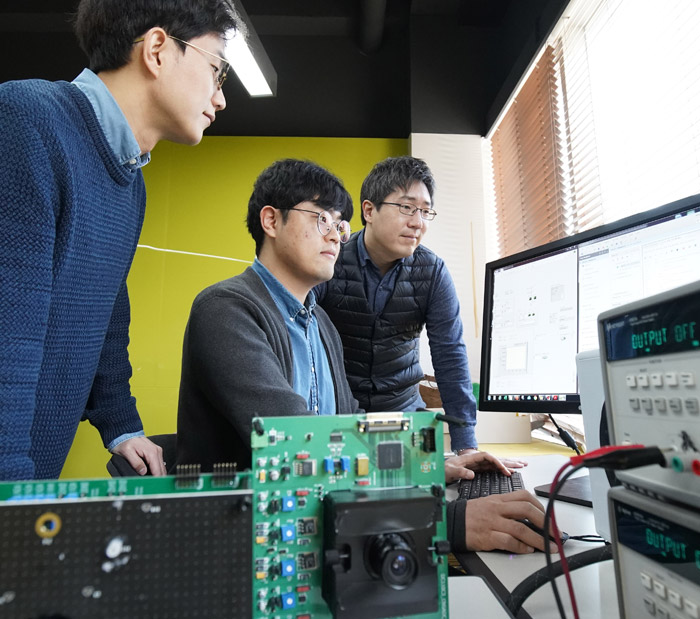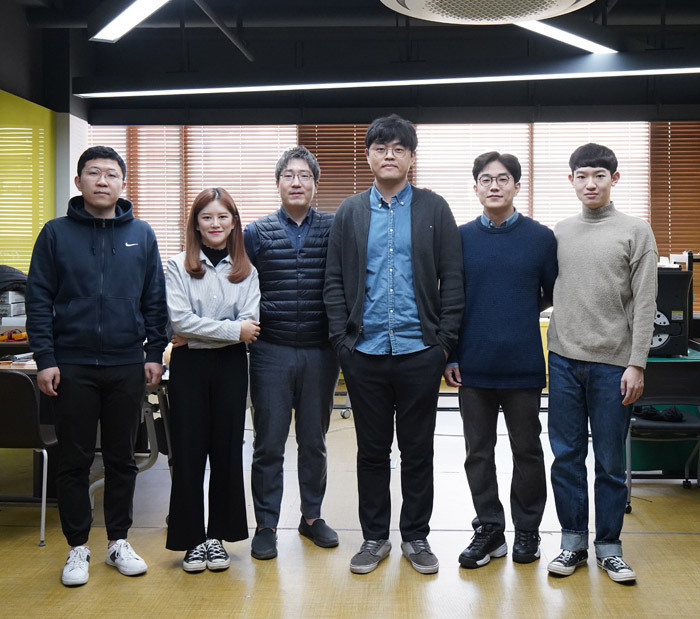Research Stories
Development of Time-of-Flight (ToF) 3D CMOS Image Sensor
Successful Development of a time-of-flight (ToF) 3D CMOS image sensor for mobile services that generates 3-dimensional images of objects without motion artifact even under extreme illumination.
Semiconductor Systems Engineering
Prof.
CHOI, JAE HYUK
전정훈 교수
Development of Time-of-Flight (ToF) 3D CMOS Image Sensor
Prof. Jaehyuk Choi and Prof. Jung-Hoon Chun in the Department of Semiconductor Systems Engineering at SKKU have successfully developed a time-of-flight (ToF) 3D CMOS image sensor for mobile devices that generates 3-dimensional images of objects without motion artifact even under extreme illumination. The research paper was accepted to be published at the International Solid-State Circuits Conference (ISSCC), the top-tier conference on semiconductor circuits.
Founded in 1954, ISSCC has a 66-year history this year and is the most prestigious conference called the Olympics in semiconductor circuitry. Each year, more than 3,000 scholars and engineers from 25 countries gather to showcase the world's best circuit technologies. It is also well known for selecting papers through a rigorous review process and for leading companies such as Intel and Samsung to present the latest technology competitively.
The 3D image sensor that detects not only the shape of the object but also the distance information can be used for robot navigation and security applications as well as mobile applications such as 3D face recognition, distance-based autofocusing when taking pictures, and 3D image synthesis for augmented reality. The ToF image sensor is a sensor that detects the distance of an object by irradiating infrared light with high-frequency modulation and detecting a phase change of reflected light from the object. The ToF image sensor overcomes the size limitations of the conventional structured-light 3D image sensor used in existing mobile devices, and is a miniaturized sensor semiconductor with a fine distance-accuracy of mm. ToF image sensors have recently started to be installed in mobile devices, but the Japanese company (SONY) has preoccupied the market. Besides, there are technical problems such as limitations of depth resolution and image resolution, distortion in detecting moving objects, and saturation due to extreme illumination in outdoor imaging.
SKKU's research team developed a ToF image sensor SoC that integrates a high-speed photodiode device that improves depth resolution, an upscaling image processor that outputs 320 x 240 pixels of physical pixels at 640 x 480 (VGA) resolution, a dynamic modulation circuit that reduces motion artifacts, and an ambient-light cancelling circuit. In collaboration with UNIST and domestic Fabless company ZeeAnn, our research team successfully developed prototype sensor chips and outperformed existing ToF sensors.
The paper will be presented at the ISSCC's Imagers and ToF Sensors session in February 2020. A total of 10 papers accepted in the session are mainly published by the world's top companies such as Samsung, Sony, Toshiba and Panasonic, and SKKU is the only domestic university. In addition to paper presentation, SKKU's research team will demonstrate the performance of the ToF image sensor directly in the demonstration session of the ISSCC conference.
※Paper: “A Dynamic Pseudo 4-Tap CMOS Time-of-Flight Image Sensor with Motion Artifact Suppression and Background Light Cancelling Over 120klux”, ISSCC, 2020.
※Authors: Donguk Kim (1st author, dept. of electrical and computer engineering, SKKU), Jaehyuk Choi (corresponding author, dept. of semiconductor systems engineering, SKKU), Jung-Hoon Chun (co-author, dept. of semiconductor systems engineering, SKKU), Canxing Piao Park·Yeonsoo Ahn·Kihwan Cho (co-authors, dept. of electrical and computer engineering, SKKU), Seunghyun Lee·Dahwan Park·Seong-Jin Kim (co-authors, dept. of electrical and computer engineering, UNIST), Jungsoon Shin·Seung-Min Song (co-authors, ZeeAnn)


